SC Johnson Goes Geothermal at Frank Lloyd Wright-Designed Headquarters


SC Johnson plans to reduce its energy consumption at its Frank Lloyd Wright-designed corporate headquarters in Racine, Wisconsin through the use of a geothermal system that will provide heating and cooling for the complex's buildings.
It's fair to say that the best companies are those that recognize their size, stature and success as opportunities for them to do good in the world. We often see a small number of companies repeatedly mentioned in this regard.
One of them is Wisconsin-based SC Johnson, a fifth-generation family-based business that specializes in the manufacture of household products (e.g. Windex, Pledge and Glade) and owns brands such as Mrs. Meyer's, Ecover and Method. The company has long distinguished itself as a leader in corporate and environmental responsibility and transparency. SC Johnson’s list of numerous awards keeps growing, including most recently, a 2017 Conservation Hero Award from Conservation International and a 2015 Annual Gold Medal for International Corporate Achievement in Sustainable Development from the World Environment Center.
The company has now taken a further step with the announcement of a plan to reduce its energy consumption at its Frank Lloyd Wright-designed corporate headquarters in Racine, Wisconsin (pictured above) through the use of a GeoExchange geothermal energy system to provide heating and cooling for the complex's buildings.
Geothermal energy takes advantage of the constant year-round temperatures underground as inputs for heating and cooling operations. As such, it is recognized as a renewable source of energy. Typically, wells are dug and fluids, such as water, are used to bring the warmer (in winter) or cooler (in summer) temperatures to the surface where they are further heated or cooled. In this case, the well field will be drilled beneath a parking lot. The project, which is pending local approval, is expected to reduce energy consumption by 40 percent, compared with the system it's replacing. Additional measures, including the installation of solar photovoltaic panels along with a more efficient boiler, will result in an overall facility energy savings in the 57 to 62 percent range.
CEO Fisk Johnson had the following to say about the project:
“As a global company, you think about your footprint in all the places you operate and how to minimize your impact. Leading the industry in an environmentally responsible manner starts at home. For us, that meant taking a look at our operations and finding where we can lessen our impact by reducing greenhouse gas emissions, addressing air quality and increasing the amount of energy offset from renewable resources. Transitioning to geothermal energy at our headquarters goes a long way toward accomplishing those goals.”
This is hardly the company's first venture into the use of renewables. Going back over 15 years, the company has launched several projects focused on sustainability, including:
- A manufacturing plant in Surabaya, Indonesia, that uses waste husks from rice grains as a fuel source for heating water for production. This initiative reduced 7,000 metric tons of greenhouse gas emissions annually.
- Solar power for hot water heating within various manufacturing facilities in China, India, Indonesia and Mexico.
- Three SJ Johnson manufacturing sites – Bay City, Michigan; Mijdrecht, Netherlands; and Gorzow, Poland – run on 100 percent wind energy, while others including those in Mount Pleasant and Waxdale, Wisconsin as well as Toluca, Mexico, generate a portion of their power from wind.
- The Waxdale plant also uses methane gas from a nearby public landfill to generate 28 percent of its energy. An additional 57 percent of its power requirements comes from a second cogeneration system that uses cleaner-burning natural gas.
In total, SC Johnson’s greenhouse gas reduction efforts have cut emissions from its worldwide manufacturing sites by 62 percent relative to the company’s 2000 baseline.
“SC Johnson has made a commitment to diversifying energy sources and prioritizing the use of renewables whenever possible,” Johnson said in summing up this project. “Our work is far from over, and we’re excited to do our part at home in Racine with the GeoExchange system at our headquarters. But we also believe that lowering our carbon footprint around the world will make a positive impact on the communities we serve.”
Image credit: SC Johnson
New Framework Helps Global Philanthropists Align Money with Mission


Global foundations are increasingly expected to use their wealth for positive social and environmental impact, but their money is not always aligned with their mission. A new framework seeks to remedy this ongoing challenge.
Global foundations with a collective $1.5 trillion in assets are increasingly expected to use their wealth for positive social and environmental impact. Yet their money is not always aligned with their mission. A new guide from Rockefeller Philanthropy Advisors (RPA), which advises foundations on a range of projects benefitting causes from the arts to education to public health, aims to remedy this challenge.
The Philanthropy Framework, its authors say, “seeks to address fundamental changes in philanthropy and the world such as generational shifts in attitudes, massive wealth creation, diversity of capital, new models for impact, and new operating environments.”
Created with input from more than 50 global foundations, the Framework is “a practical, useful guide to enable existing, new and next-generation philanthropists to create more meaningful social impact,” Olga Tarasov, director of knowledge development at Rockefeller Philanthropy, told TriplePundit.
“With growing global challenges around poverty, the environment, education, health and more, we need scalable, systemic change, and philanthropies are well placed to provide that,” Tarasov says.
Founded in 2002, RPA has grown into one of the world’s largest philanthropic service organizations, she adds, facilitating more than $3 billion in distributed grants to nearly 70 countries.
Changing landscape for philanthropy
As the authors of the Framework note, philanthropy is in an era of expansion. Some of the signs pointing to this trend include:
- More wealthy individuals are engaging in philanthropy earlier in their lives, with some reports even suggesting that millennials are poised to become a driving force in philanthropy.
- Impact investing has emerged as a major force in philanthropy, as 3p has reported.
- Philanthropy is less top-down, and increasingly incorporates community-based decision-making.
- “Giving while living,” otherwise known as “spend down” philanthropy, in which assets are distributed in a set period of time instead of establishing foundations to run in perpetuity, is on the rise.
- Corporate interest in “social business” models is changing the scope of corporate giving and corporate social responsibility (CSR) to focus more on societal impact.
- The expectations of philanthropy and donors themselves are expanding, both from public-sector officials who sometimes seek to shrink philanthropy’s sphere of action, as well as from critics of the privileged role that private philanthropy has long had in American society.
Those critics include Anand Giridharadas, a former New York Times foreign correspondent, whose book, Winners Take All: The Elite Charade of Changing the World, claims that philanthropic foundations and “business elites . . . may believe they are changing the world when instead they may be protecting a system that is at the root of the problems they wish to solve.”
Such criticisms have prompted some inward reflection by foundations and their operators, Tarasov explains. “We developed the Framework to help us as a sector serve better and to align organizations for maximum impact.”
Redefining philanthropy
“Impact investing and mission-aligned investing have a huge role to play in philanthropy,” Tarasov says. Yet, according to a survey by The Chronicle of Philanthropy, of America’s 15 largest endowed foundations, which together hold $150 billion in collective assets, just two-tenths of 1 percent of their endowments are invested in line with their mission.
There are signs that corporate philanthropy foundations are recognizing that they need to move in a new direction. As 3p reported earlier this year, the organization CECP: Chief Executives for Corporate Purpose, which represents 250 of the world’s largest companies and $15 trillion in assets under management, is moving away from philanthropy and toward “purpose,” as it is currently driven by the increased interest of investors in the sustainability of long-term value creation.
“CSR is nothing new for companies, but the lens has changed a little bit,” Tarasov told 3p. “Our research and work have shown that, as opposed to philanthropy and foundations being a lubricant for the corporate brand, the focus is really on societal impact and social change. It’s about intentionally aligning your business expertise with business impact, and to make the global economy work for everyone.”
SDGs offer an ideal framework for foundations
Private-sector companies and their various foundations are expected to play a key role in helping to bridge the $2.5 trillion annual funding gap to meet the U.N. Sustainable Development Goals (SDGs), as 3p has reported.
RPA, which manages the SDG Philanthropy Platform, is well aware of this need, and is partnering with foundations to align their work to the SDGs as well as collaborating with other likeminded organizations to scale impact.
“The SDGS provide a really nice framework for those engaged in philanthropy to think about outcomes and what they want to deliver,” Tarasov says. “It’s one tool available to philanthropies as they think about how to fund and accelerate scalable solutions targeting systemic changes around pressing global issues.”
Image credit: Pixabay
For EVs, the Future Is Already Here in Norway
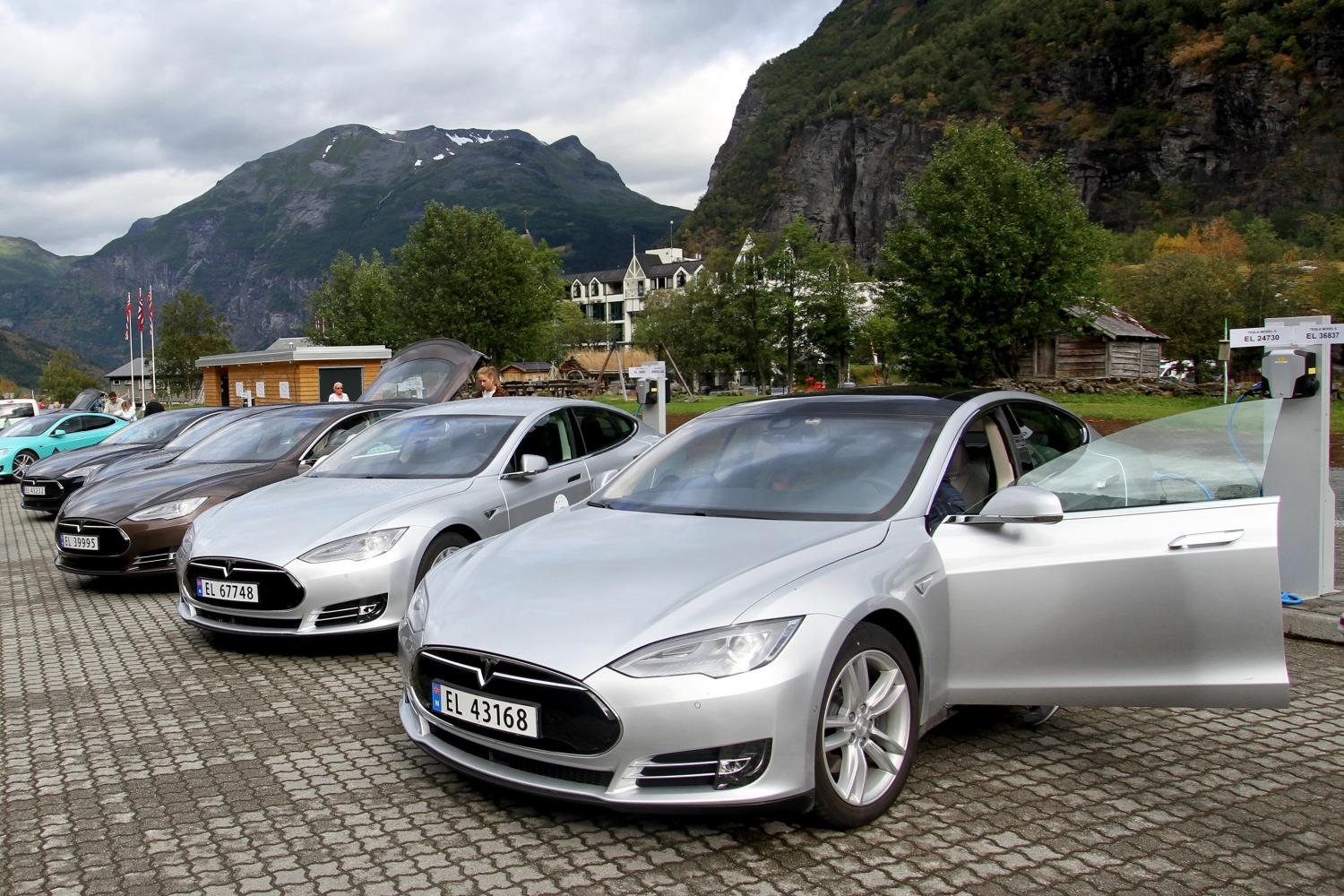
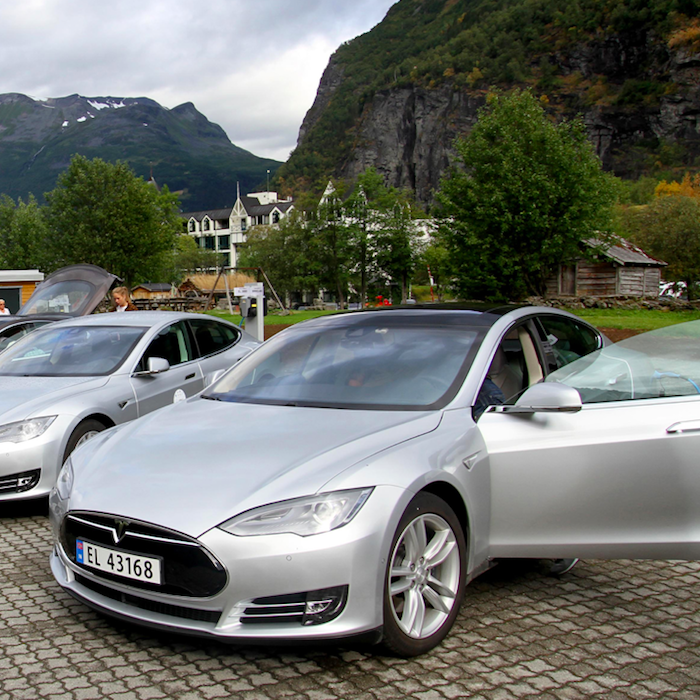
In Norway, the electric car predictions for 2040 and 2050 have been arriving much faster than transportation experts would assume. 30 percent of all cars registered in the country last month were zero-emissions vehicles.
Countless reports keep predicting that zero-emissions electric vehicles (EVs) will rule the roads by mid-century. We just covered the latest such survey by Accenture.
But in Norway, what’s been predicted for 2040 and 2050 is arriving much faster than transportation experts would assume.
According to the country’s Information Council for Road Traffic (OFV), the total of new zero-emissions cars (which include both EVs and hydrogen-powered cars), amounted to almost 60 percent of all new automobile registrations last month. That's almost double the number of zero-emissions cars registered in March 2018.
The news in Norway was especially promising for Tesla, whose Model 3 comprised almost half of those newly purchased zero-emissions vehicles—or over 30 percent of all new cars that Norwegians registered last month. Elon Musk’s brainchild sold more than 5,800 of its cars in Norway during March—a little over 5,300 of which were the Model 3.
Norway’s affinity for electric cars has been several years in the making. Earlier this decade, EVs only had market share in the low single digits, but by the end of 2016, Norwegians had registered over 100,000 zero-emissions vehicles—and, mind you, this is a nation home to only about 5.2 million people. EV-loving California, with about eight times the population of Norway, has approximately 500,000 electric cars in total roaming its roads, so you can imagine the impact EVs are having all over this corner of Scandinavia.
Also helping Norway’s EV boom is the fact that the oil-rich nation actually scores most of its electricity from hydropower. According to the country’s government, Norway is the largest producer of hydropower in Europe and ranks sixth worldwide.
Furthermore, the Norwegian government offers a bevy of incentives for owners of EVs. Such perks include eliminating or vastly reducing certain automobile and registration taxes, reduced or free parking, lower toll charges on many roads or ferries, and an ambitious plan to boost the country’s charging infrastructure. In a country where the personal tax rate alone hovers around 40 percent, these breaks provide more than enough motivation for new car buyers. Some of these incentives will fade in the next few years, but it is clear that EVs will long rule the roads in Norway.
Critics point out that Norway, which regularly ranks within the top 10 wealthiest nations on earth, is able to afford this zero-emissions largess as it is also one of the world’s largest exporters of fossil fuels. The country’s sovereign wealth fund has made moves to divest from conventional fuels such as coal, but the argument arises again that while Norway is slashing emissions at home, it’s shipping them abroad.
Nevertheless, Norway is the perfect storm demonstrating how the right incentives, consumer enthusiasm and a forward-thinking culture have led to what many foresee as the future of transportation occurring right now. The push for EVs benefits U.S. companies such as Tesla as well, as Norway rounds out the list of top 10 export markets for American automakers.
Image credit: Norwegian Electric Vehicle Association/Wiki Commons
Many ESG Investors Are So Far Avoiding Uber and Lyft


For ESG investors, many factors add up to why they may give Lyft and Uber a pass when it comes to adding new companies’ equities to their portfolios.
There has been plenty of buzz and headlines due to Lyft’s recent initial public offering, which will be dwarfed in size compared to Uber’s expected IPO later this year. Will these be the next stocks to go berserk, or will they become two more Silicon Valley-inspired unicorns? Regardless, Lyft and Uber are companies that many ESG (environmental, social and governance) investors would rather not touch. Visit Northern California, and you will see why.
If you have visited San Francisco lately, you’ve probably noticed the traffic can be insufferable at times—maybe all the time if you compare it to where you call home. Sure, the Bay Area keeps growing due to the lure of high-paying jobs, great weather and spectacular scenery, but all of that is difficult to savor if you are stuck in traffic. And no wonder why San Francisco’s congestion is horrible: With shared rides available from Uber and Lyft, why would you queue in line to take public transportation when, for just a smidge more, you can ride more comfortably in someone else’s car?
Last fall, a San Francisco government study concluded those convenient rides really are not so convenient after all when accounting for the extra time commuters were spending in traffic. The authors of the survey crunched the numbers and found that ridesharing companies (also known as transportation network companies, or TNCs) were accountable for a 51 percent increase in commuters’ time in 2016 when compared to 2010.
Meanwhile, a different report issued last year brought up another point: Contrary to these ridesharing companies’ claims that they are removing cars from the road, a study of major U.S. cities concluded the reality was that these passengers were giving up mass transit. Add the constant “deadheading” (the time Lyft and Uber drivers spent driving on roads without any passengers), and the result was more cars on the road, not less.
With all that extra traffic on city streets, one outcome, of course, is more air pollution. And even though Uber says it is playing in the sandbox by rolling out public transportation options on its app for residents living in the Denver area, some studies—including one led by the University of Kentucky—indicate that ridesharing companies are not a complement to mass transit, but more of a saboteur instead.
Some cities complain this trend can lead to a decrease in public transportation infrastructure. As Business Insider recently reported, fares keep increasing, while services are cut. As a result, delays rise.
All of these factors add up to why many ESG investors may give Lyft and Uber a pass when it comes to adding new companies’ equities to their portfolios. Green Century Funds is one such investor group that is taking a wait-and-see attitude.
“I wish there was this much excitement around new public transportation bonds,” said Green Century President Leslie Samuelrich in an emailed statement to TriplePundit. “It remains to be seen if ride-hailing companies, like Uber and Lyft, are going to help or hurt our efforts to reduce greenhouse gas emissions and address global climate change.”
The jury is still out, however. “The best-case scenario is that [Lyft and Uber] use their market leverage to help accelerate the transition to electric vehicles and make good on their promises to find ways to reduce vehicle miles traveled,” Samuelrich added. “The worst-case scenario is they siphon riders away from more environmentally-friendly options and divert much-needed revenue from public transportation, which remains the most environmentally-friendly option.”
A portfolio manager at the New Alternatives Fund minced no words about Lyft and Uber. “As far as I can tell, they’re actually putting more cars into the congested areas, and they’re pulling business out of the transit systems,” Murray Rosenblith told Reuters.
Of course, the larger challenge looming over these companies is that they have not yet turned a profit. Lyft’s stock price, which enjoyed a sugar high upon last week’s IPO, has since suffered a relative sugar crash. The debate rages on whether Lyft and Uber are a net positive for society and the environment, but for any investor, the fundamentals matter—which is why Levi’s, praised by many analysts for its brand reputation and steady cash flow (not to mention its social conscience), may be a more attractive option for the ESG investments crowd.
Image credit: ItsaWaB/Pixabay
Electric Vehicles Will Create a $2 Trillion E-Mobility Market by 2040
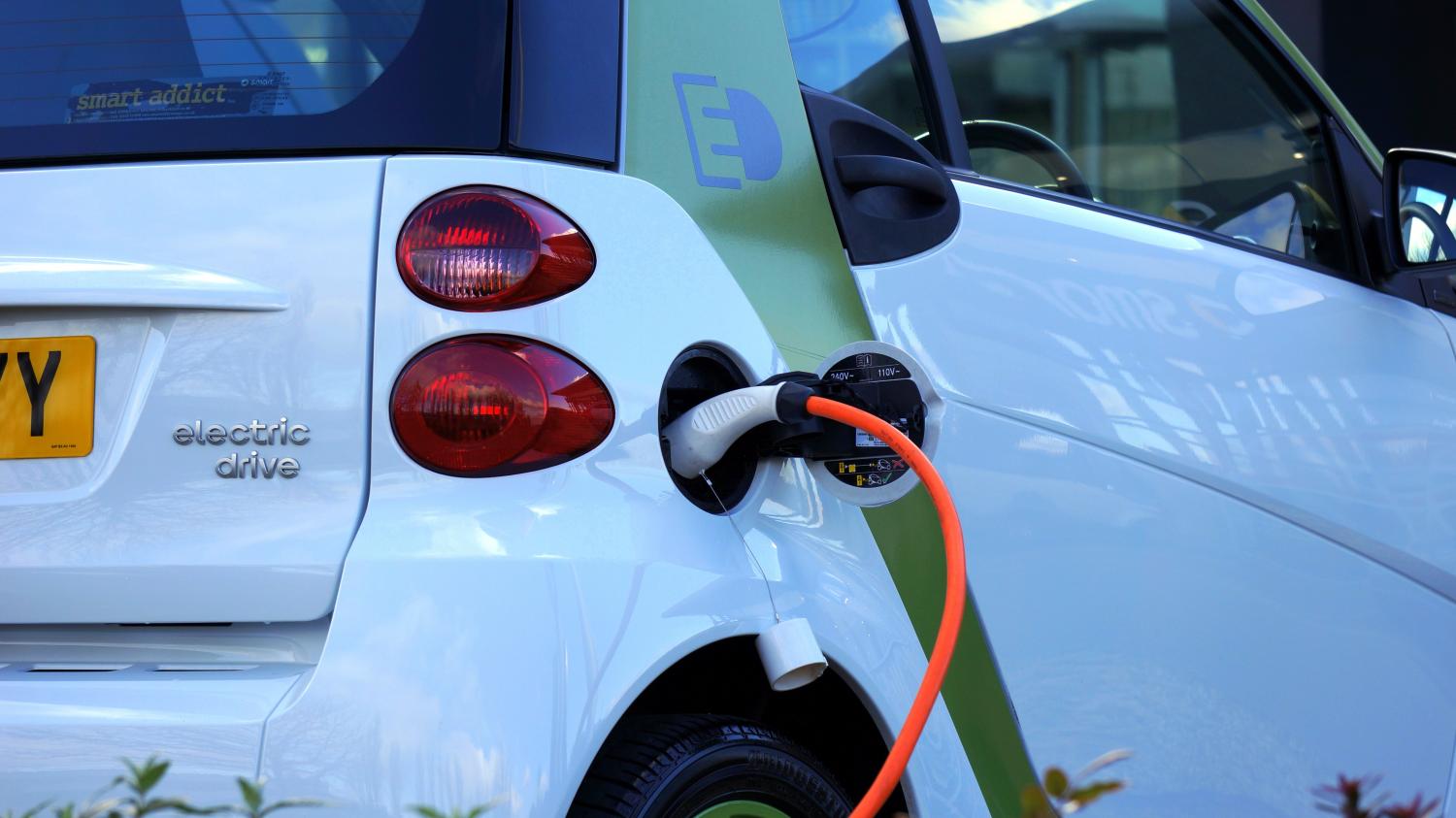

Electric cars will overtake conventional vehicles by 2040 and will create a $2 trillion e-mobility opportunity for utility companies, according to research released today by Accenture.
Electric vehicles (EVs) will overtake conventional vehicles by 2040 and will create a $2 trillion e-mobility opportunity for utility companies, according to research released today by Accenture.
The global consultancy reached this conclusion after surveying 6,000 consumers in the United States and Europe, combined with scenario modeling undertaken by the authors of the study. Accenture’s report is part of ongoing research trends that suggest EVs are not only here to stay, but will scale up in adoption fast.
The potential for utilities builds on trends that favor continued growth of the global electric vehicle market. Though the up-front cost of an EV still typically exceeds that of cars powered by the internal combustion engine (ICE), battery costs have decreased by 80 percent over the past six years—from US$750 per kilowatt-hour (kWh) in 2010, Accenture points out. Today, price parity with ICE cars continues to narrow.
In addition, the long-term running costs of EVs are lower than fossil fuel-powered vehicles, such that an electric car with a 60 kWh battery achieves an overall lower total cost of ownership significantly before 40,000 miles rolls around (compared with a diesel vehicle), according to the study.
These favorable trends with respect to cost, combined with more consumer choices, will enhance EV adoption. Whereas there are around 50 EV models to choose from in the combined European Union and U.S. markets today, Accenture projects there will be 400 EV models available globally as soon as 2025, with over 10 million EVs on the road by then.
Positive though these trends are, it’s not all plain sailing for these cars. Despite the growth in the EV market, there are still pain points with owning an electric car. Accenture points out that range remains an issue for many consumers, as well as charging time. On top of this, EV charging continues to primarily rely on the ability to charge at home—which is problematic for many urban dwellers without a garage, or in areas without a comprehensively built-out public charging infrastructure.
These negatives mean that 39 percent of owners of conventionally-powered cars say they would never buy an electric vehicle.
The market potential, therefore, requires that impediments to EV ownership are further reduced, and companies that allow for EV ownership to become as easy as possible will bend the adoption curve upward, Accenture predicts.
Unlocking this $2 trillion market potential requires creating an ecosystem which is largely absent today. Accordingly, Accenture identifies four pillars such an ecosystem would need to encompass:
-
Commodity sales: In simple terms, the selling of kWhs within the EV market (in other words, rolling out time-of-use tariffs to EV owners) is one component of this market shift, but is overall a low-margin part of the equation. Since selling power only achieves somewhere in the range of a 3 to 5 percent margin, this is just the starting point as utilities find ways in which they can convince consumers to adopt EVs.
-
Charging stations: This is an important area of needed investment. Accenture estimates $150 billion needs to be spent to build out a requisite infrastructure for EVs, but identifies that utilities should be motivated to invest because of the competition. Already, oil and gas companies are getting in on the action by building charging stations in places which leverage their existing distributed retail network: their gas stations!
-
E-mobility services: This is a very important yet, so far, untapped opportunity. Successful utilities will address challenges such as charging station installation and maintenance, mobile apps for remote charging, integrated home energy management and financing services, Accenture predicts. Consumers have an appetite for enhanced services, the consultancy found, saying half of consumers expect to buy a home charging station as part of a packaged deal.
-
Grid flexibility: Tapping into the EV market potentially affords utilities the ability to enhance their networks’ efficiency. Whereas 53 percent of consumers plan to charge between the hours of 5 p.m. to 10 p.m., utilities would be able to devise market-based congestion management strategies to allow them to balance power supply and demand seamlessly. Done correctly, utilities would be able to harness their existing capacity more efficiently without needing to strengthen their physical networks.
Putting all of this together is where Accenture says the opportunity lies:
Commodity + Services + Flexibility = $2 trillion of integrated value
Utility companies are uniquely positioned to integrate this bundle. They already understand the energy markets, along with all the rules and regulations that go with them. In addition, they already have strong customer relationships—including the valuable consumer data that are included with those relationships.
And where utility companies potentially have the edge over oil and gas companies, which increasingly form the competition in the e-mobility marketplace, is with respect to aligning with the values and beliefs of their customers.
For example, 73 percent of EV buyers say they have gone electric for environmental reasons, so utilities can continue to bias their energy generation from renewable sources to align their brands with consumers’ efforts to reduce emissions and their overall environmental impact.
Image credit: Pixabay
New Report Advises Business to Be a Force for Good in a Rocky Business Climate


In a challenging business climate where companies feel more pressure than ever to take stands on social and environmental issues, a new report offers suggestions on how companies can stay on the right side of their stakeholders, even when times are tough.
In a challenging business climate where companies feel more pressure than ever to take stands on social and environmental issues, a new trends report offers tips on how companies can stay on the right side of their stakeholders even when times are tough.
The Force for Good Forecast 2019 report is the latest trends forecast from Future 500, a nonprofit consultancy focused on stakeholder engagement.
“America’s deepening political divide is driving a few of these shifts, but many reflect subtle changes in philanthropy and demographics that we’ve tracked for years,” Future 500 Chief Operating Officer Erik Wohlgemuth said in a press statement.
“Some trends are bubbling up from emerging economies, while others flag changing tactics in the environmental-activist community,” he added.
The pain points companies are experiencing these days come from all sides:
- Consumers and watchdog groups, who can single out a company’s practices or products with an aggressive campaign, potentially leading to significant brand damage, as TriplePundit has reported.
- Investors, who increasingly signal dissatisfaction with companies via shareholder resolutions—pushing companies like Darden to reverse its position on antibiotic use in meats, for example, or for others to reveal their gender pay gaps.
- Frustrated employees, who won’t hesitate to act to get their employers to toe the line, as the recent strike by thousands of Uber and Lyft drivers in several California cities last week showed.
The authors of the report highlight what they consider the 10 most important emerging social, environmental and corporate advocacy trends, while advising companies how they can avoid or minimize conflict with investors, employees and critics. Among those trends:
The year we break our promises: Many companies “will fall far short” of the 2020 goals that hundreds of them set on challenges including workplace diversity and inclusion, human rights, water, waste, packaging, carbon, and deforestation. A company that tries and fails to meet the targets but keeps trying will be in a better place than one that allows things to slide, the report predicts.
Change agents tear down the walls: Activists of all kinds have found common ground, and they’re using it build movements, as the proponents of the New Green Deal have demonstrated. “If nothing else, the non-binding resolution is a powerful affirmation of a big-tent movement,” concluded the report’s authors.
So long to the quid pro quo: As Amazon’s short-lived proposal to set up headquarters in New York City showed, governments are scrutinizing the unintended impacts of big corporate project proposals on housing affordability, community infrastructure and their local communities’ overall quality of life.
#MeToo is just getting started: The movement could well transcend gender and elevate expectations for workplace equality and corporate culture across the board. Google employees’ campaign to push the company on sexual harassment claims is a case in point.
The C-suite is stepping up: Consumers increasingly expect companies to take public stands on controversial issues, and they are expecting the same of CEOs. Recent examples include when Nike anointed Colin Kaepernick as its public face or when Gillette challenged its customers to “man up.” Even BlackRock CEO Larry Fink has seemed to endorse the rise of corporative activism in his annual open letter to CEOs, as 3p has continued to cover.
Other trends highlighted in the report underscore that companies need to look beyond a “gut check” to having “context-based” climate action frameworks like the Science-Based Targets Initiative.
The report also warned that the climate justice community behind the New Green Deal can’t afford to be ignored in the nascent but growing support for “a revenue-neutral, federal carbon tax,” as recently proposed by the Climate Leadership Council.
What’s more, “plastics will get personal in 2019,” the report, along with ongoing reporting from 3p, predicts. Pressure will increasingly come from consumers, as in the Break Free From Plastic Coalition, which named and shamed the top 10 companies it says contributes to single-use plastic debris in the oceans.
Right behind them is the newly formed Plastic Solutions Investor Alliance, a coalition of 25 institutional investors with a collective $1 trillion of assets under management which has challenged leading brands like PepsiCo, P&G, Nestlé and Unilever to take action on plastics to the next level.
The Force for Good Forecast ends on a positive note, advising companies that there is still time to flip the narrative on those 2020 deadlines. “Through thoughtful engagement, companies can position themselves for leadership on the most pressing social and environmental issues of our time,” the report concludes.
Image credit: Bruce Emmerling/Pixabay
Impossible Foods May Just Rescue Fast Food’s Reputation


Burger King, home of the Whopper, is the latest fast food company to give Impossible Foods’ Impossible Burger a shot. Could the result be a lift for fast food's reputation?
As TechCrunch exclaimed earlier today, no, this isn’t an April Fool’s prank—Burger King, home of the Whopper, is the latest fast food company to give Impossible Foods’ Impossible Burger a shot.
As announced in a Burger King press release and on Impossible Foods' website, 59 restaurants in and around St. Louis will be serving the Impossible Whopper. Just like the famous Whopper, the burger will be wedged between a toasted sesame seed bun with tomatoes, lettuce, pickles, onions and condiments—only it’s not beef. The Impossible Whopper’s star patty is made out of what seems like an impossible combination: soy protein concentrate, coconut oil, potato protein and other ingredients together make up a high-protein, tasty burger without beef or any animal products.
The burger’s secret ingredient is a heme molecule, which gives the Impossible Burger more of a meaty flavor and that primal, bloody color of a medium-rare patty fresh and hot off the grill.
Today’s news is quite the win for Impossible Foods, which launched earlier this decade. The vegan burger first started making its way into high-end restaurants in New York and other large cities, then continued to scale up as it hit the menu at chains such as White Castle.
And if the Impossible Whopper becomes a hit for Burger King and ends up on more menus nationwide, this news is also a win for the Miami-based company, the wider fast-food industry and, most importantly, the environment and animal rights.
It’s no secret that the fast-food industry, as well as many sit-down restaurant chains, have struggled in recent years. Younger consumers want to know where their food is sourced, are increasingly flexitarian, vegetarian or even vegan, and are more health conscious.
At the same time, burger chains keep thriving. Arguing about the best burger is like trading barbs over celebrities or professional athletes—Californians are loyal to In-N-Out, D.C. natives will tout their long love affair with Five Guys before it expanded nationwide, and Texans will warn you not to mess with Whataburger. And that is just the beginning of the list.
Meanwhile, there are countless news articles, research reports and commentary about the meat industry’s impact on the planet. Hence Burger King’s chess move to add the Impossible Burger to its menu is more than a ploy to lure the vegan customer into its locations. The company and its competitors, such as McDonald’s, have the opportunity to burnish their brand reputation by showing that they, too, can take a stand on the environment and animal welfare. Impossible Foods claims this is part of the company’s mission, as it seeks to end “the use of animals as a food production technology” and that its products offer a “better way.”
If Burger King and its customers agree, the fast food sector could be onto a better way as well.
Image credits: Impossible Foods/Facebook; Impossible Foods Media Relations
After Long-Fought Investor Battle, Darden Phases Out Antibiotics in Chicken Supply Chain


Responding to investor pressure, the restaurant chain Darden said the company will phase out the use of antibiotics across its entire chicken supply chain by 2023.
After a long-fought battle by activist investor group Green Century Funds, Darden has “finally,” as Green Century said in an emailed statement, announced that the restaurant operator will adopt a policy to phase out the use of antibiotics in its chicken supply chain by 2023.
For three years, Boston-based Green Century, a leading environmental, social and governance (ESG) investor group, has filed antibiotic-use shareholder proposals with Darden, which operates Olive Garden, LongHorn Steakhouse and other major restaurant chains.
Green Century’s stance, according to a press release, is that Darden’s failure to eliminate antibiotics from its supply chain exposed the company to a number of business risks, especially those related to changing consumer preferences, reputational damage, competitive pressure and increased regulation.
An “F” on an industry report card . . .
Back in 2016, a $1 trillion coalition of 54 institutional investors, including Aviva Investors, Natixis Asset Management, ACTIAM, Mirova, Coller Capital and Strathclyde Pension Fund, launched an engagement campaign with 10 of the biggest U.S. and United Kingdom restaurant chains to call for an end to non-therapeutic use of antibiotics important to human health in their global meat and poultry supply chains.
A number of major restaurant chains targeted by investors have responded to calls for a phasing-out or reduction of antibiotic use in meat supply chains, including McDonald’s, Chipotle and Panera Bread, which topped an industry report card in 2017 on the use of antibiotics in meat. But Darden has been slow in addressing the issue: Hence Darden and Olive Garden received an “F” on that report card.
The change was too slow, said Green Century President Leslie Samuelrich, who elaborated in a press statement:
“Although Darden would have been better served to be at the forefront of the restaurant industry’s efforts to safeguard human health, I’m gratified that it finally acted on the risks posed by antibiotic misuse. It’s simply unacceptable to undermine the foundation of modern medicine to indiscriminately expose healthy animals to [as commonly described] medically-important antibiotics.”
. . . Leads to Darden’s new animal welfare policy
Darden announced a commitment to purchase chicken raised without the use of medically-important antibiotics by 2023 and said it “will continue to work with suppliers on monitoring responsible antibiotic usage.”
The company added that for “all proteins, Darden requires its suppliers to comply with the FDA guidance that medically important antibiotics no longer be used with farm animals for growth purposes, and that all shared-class antibiotics (i.e., those used for both humans and animals) be used only to treat, prevent and control disease in farm animals under the supervision of a veterinarian.”
But Matthew Wellington, antibiotics program field director for the U.S.-based PIRG (Public Interest Research Group), a consumer advocacy group involved in public health issues, told the Orlando Business Journal that FDA guidelines on antiobiotics use are “too weak.”
Darden said its new animal welfare policy was the result of “a thorough and thoughtful process, which included extensive benchmarking and input from a variety of stakeholders.” It did not mention, however, shareholder pressure as among such reasons.
Antibiotics as a worldwide public health crisis
The World Health Organization, the U.S. Centers for Disease Control and Prevention (CDC) and the United Nations General Assembly have all declared antibiotic resistance a global public health crisis. Data suggests that antibiotic resistant bacteria sicken 2 million Americans each year and may be responsible for as many as 150,000 annual premature deaths in the U.S., according to the CDC, which would make it the third highest cause of death in the country.
Experts attribute the rise of antibiotic-resistant superbugs to the overuse of antibiotics in food-animal production. The FDA reports that 70 percent of all medically-important antibiotics in the U.S. are sold for use in livestock, predominantly for prophylactic (disease prevention) purposes rather than treatment.
Image credit: Karolina Grabowska/Pixabay
Mozambique’s Climate Crisis Shows Why Companies Must Invest in Sustainable Supply Chains
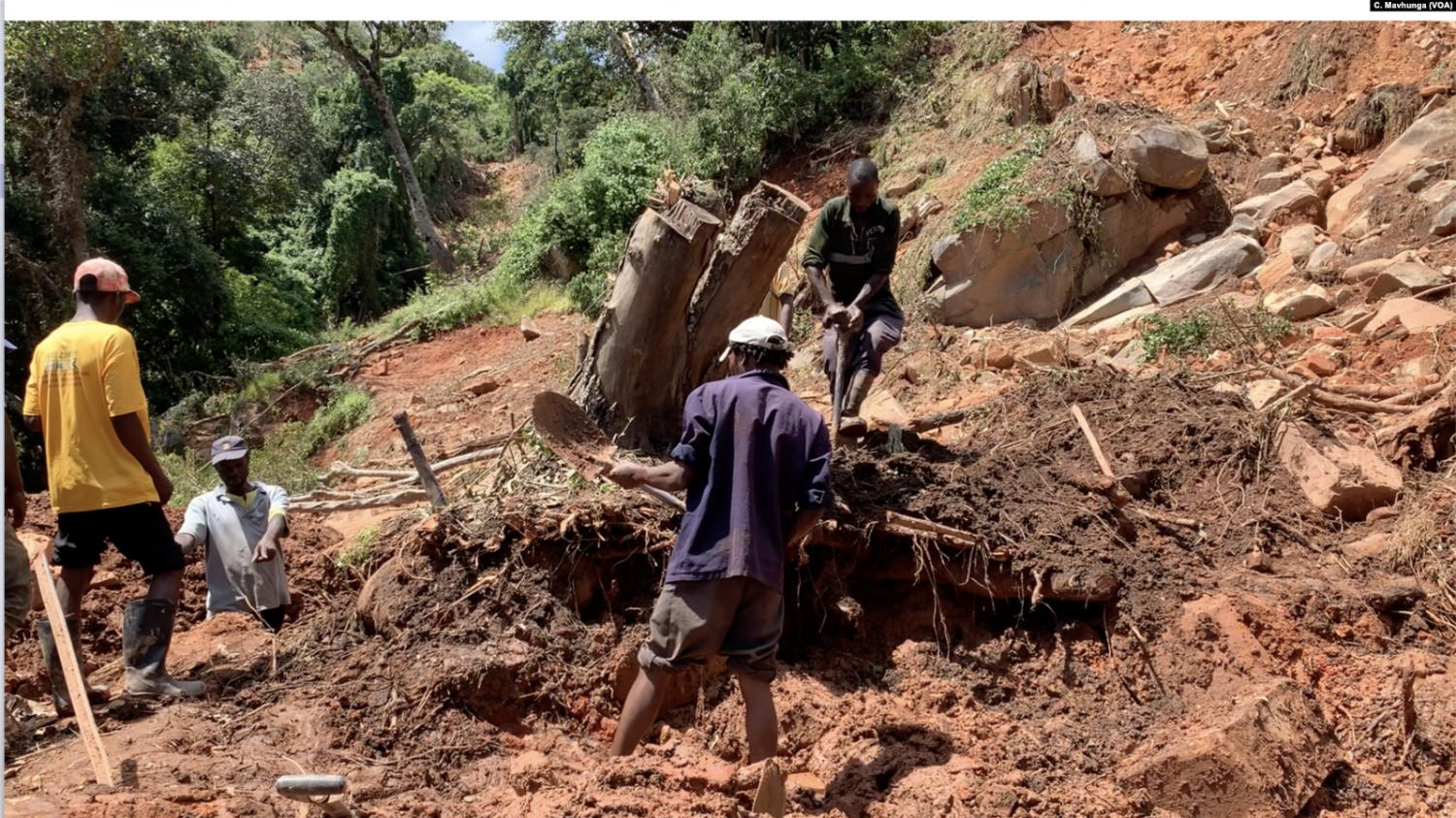
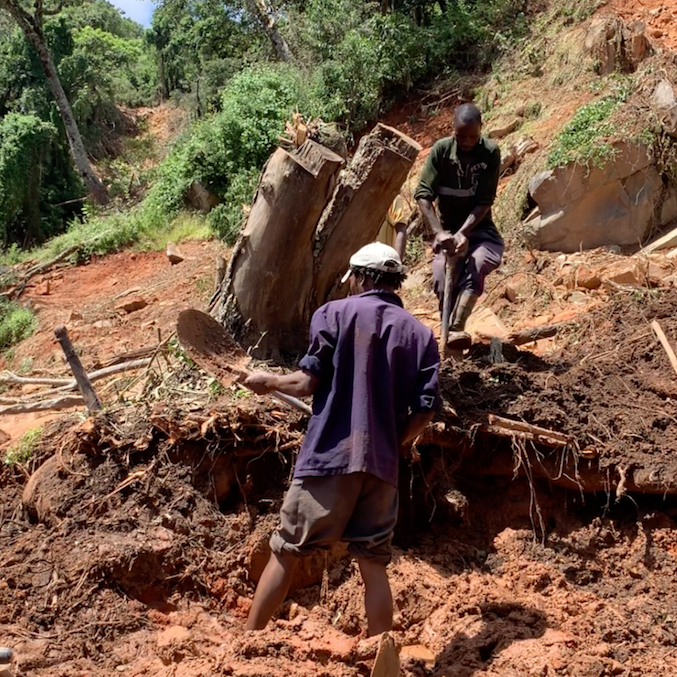
In addition to the human toll due to last month's Cyclone Idai in Mozambique, the world's largest companies are reminded that they need to do what they can to accelerate climate action efforts worldwide.
News from southeastern Africa does not often arrive to this part of the world, so in case you’ve missed it, Cyclone Idai has wreaked tragedy across Malawi, Zimbabwe and especially Mozambique since the storm hit the region in mid-March. Hundreds have died due to rapid flooding while tens of thousands have been displaced in the aftermath of a storm surge that rose as high as 13 feet (4 meters). As noted in Grist last week, the flooding in Mozambique has covered a land mass greater than the total area of Boston, Chicago, New York City and Washington, D.C. combined.
The human toll is terrible, especially as reports of cholera outbreaks are ongoing while many citizens in remote rural areas find themselves stranded without access to crucial emergency services.
But the harrowing personal accounts and pictures need to push individuals, and companies, to do more than express concern or write checks—the climate crisis in Mozambique should also serve as yet another reminder to scale up climate action.
The work that has been done on climate action and ensuring a more sustainable global supply chain matters now more than ever before for several reasons. First, depending on the source consulted, the continent of Africa is home to six or seven of the world’s fastest growing economies. Hence the world’s largest multinationals have long looked to sub-Saharan Africa as the next frontier, especially as opportunities in the rest of the world have largely flatlined. The continent’s rising middle class offers new markets for goods and services, as well as another source for many companies’ supply chains. But all and any attempts to boost sustainable development in sub-Saharan Africa will make little difference if climate volatility continues to take its toll.
Mozambique represents a microcosm of the various exports sub-Saharan Africa offers to companies and countries alike. The country's leading exports include aluminum, energy, sugar and prawns. And as far as markets go, Mozambique’s top trading partners include India, China, South Africa, the Netherlands, Italy and Spain. Considering the region’s growth trajectory, that list is likely to grow.
For now, as the NGO Médecins Sans Frontières (MSF or, in English, Doctors Without Borders) said last week, Mozambique’s entire supply chain is “broken.” True, companies can now do the obvious, such as supporting immediate efforts to ensure clean water and provide communities with the food and medicine they need.
But in the long term, the global business community will have to do more on the ground not just in Mozambique, but anywhere their supply chains have a footprint. Such projects can include programs to boost sustainable farming or invest in skills development initiatives. But with the world’s largest companies emitting the lion’s share of greenhouse gas emissions (and water, too, if you consider agriculture’s water footprint), there is plenty of macro-level work that businesses can take on as well.
After all, climate change’s most drastic impacts won’t fall on multinationals and the countries home to their headquarters—they will hit developing countries the hardest, as we have witnessed in Mozambique the past few weeks.
Image credit: Columbus Mavhunga of Voice of America/Wiki Commons
Masdar Boosts Global Impact Even Wider with Antarctica Solar Project


Abu Dhabi's Masdar recently deployed what it says is the first solar power system at an Australian Antarctic station.
We’ve long covered Masdar here at TriplePundit, and rightfully so. Several of us here at 3p have visited Abu Dhabi’s strategic initiative, which tackles a bevy of challenges. Masdar's work varies from the development of smart-cities technology to funding clean energy initiatives in nations where safe access to energy has long been lacking. Now moving ahead into its second decade, Masdar demonstrates thought-provoking ideas to oil-dependent economies on how they can transition to a 21st-century, low-carbon economy.
The company’s most recent project is a partnership with the Australian Antarctic Division (AAD) to deploy what they say is the first solar power system at an Australian Antarctic station. Masdar and AAD claim the new installation will generate up to 30 kilowatts of clean power for the Casey station, one of Australia’s three research sites on the continent’s Vincennes Bay. The region is one of Antarctica’s coldest and, in recent years, has been the subject of scientists’ concern over its rapidly accelerating ice melt due to climate change.
The project exemplifies Masdar’s continued interest in Antarctica, which includes a United Arab Emirates university’s research project that focuses on finding ways to improve monitoring shifts in the Antarctic sea ice. In addition, an internship program sends young Emirati professionals to visit the Casey station, where they work as interns.
Masdar touts the project’s solar PV panels, sourced from the German company Aleo Solar, as being built to withstand extreme weather conditions in the Antarctic. Wind speeds in the world’s southernmost continent can roar to almost 187 miles an hour (300 km/hour), and the average temperature hovers from -14 degrees to -76 degrees Fahrenheit (-10° to -60° Celsius), depending on the time of year. The Casey project station, hence, could also serve as a test case for how next-generation solar panels could perform in places where extreme weather is the norm.
The Antarctica project dovetails with other ongoing projects at Masdar, including renewables investments in the Caribbean and continued waste-to-energy research. Meanwhile Masdar is touting its complex of smart buildings near Abu Dhabi’s international airport as an up-and-coming global technology and startup hub.
Masdar, along with its various projects and eponymous city, have long been subjected to criticism. Complaints about Masdar especially piled on during its early years, when the initial ambitious plans had to be scaled back after Abu Dhabi was compelled to offer a financial lifeline to Dubai during that neighboring emirate’s fiscal crisis of 2008-2009. Its planners also missed out on some early opportunities that could have nipped all that harping in the bud.
The building of hotels (as long as they followed sustainable building standards, of course) to accommodate passengers in transit at the nearby airport, for example, would have helped spread valuable word of mouth about the ambitious project arising out of the desert. At its origins, Masdar conducted a welcoming and transparent visitors’ program, which unfortunately led to press reports of an empty city. That’s no longer the case, as the city is now full of restaurants as it emerges as the entertainment district of Abu Dhabi’s outer suburbs—and it could only grow due to its proximity to Dubai. The opening of more residential complexes will also show that Masdar City can thrive 24 hours a day, seven days a week. Nevertheless, while naysayers keep saying it can’t be done, Masdar keeps achieving and humming along, defying the odds.
Image credit: Casey Research Station/Facebook